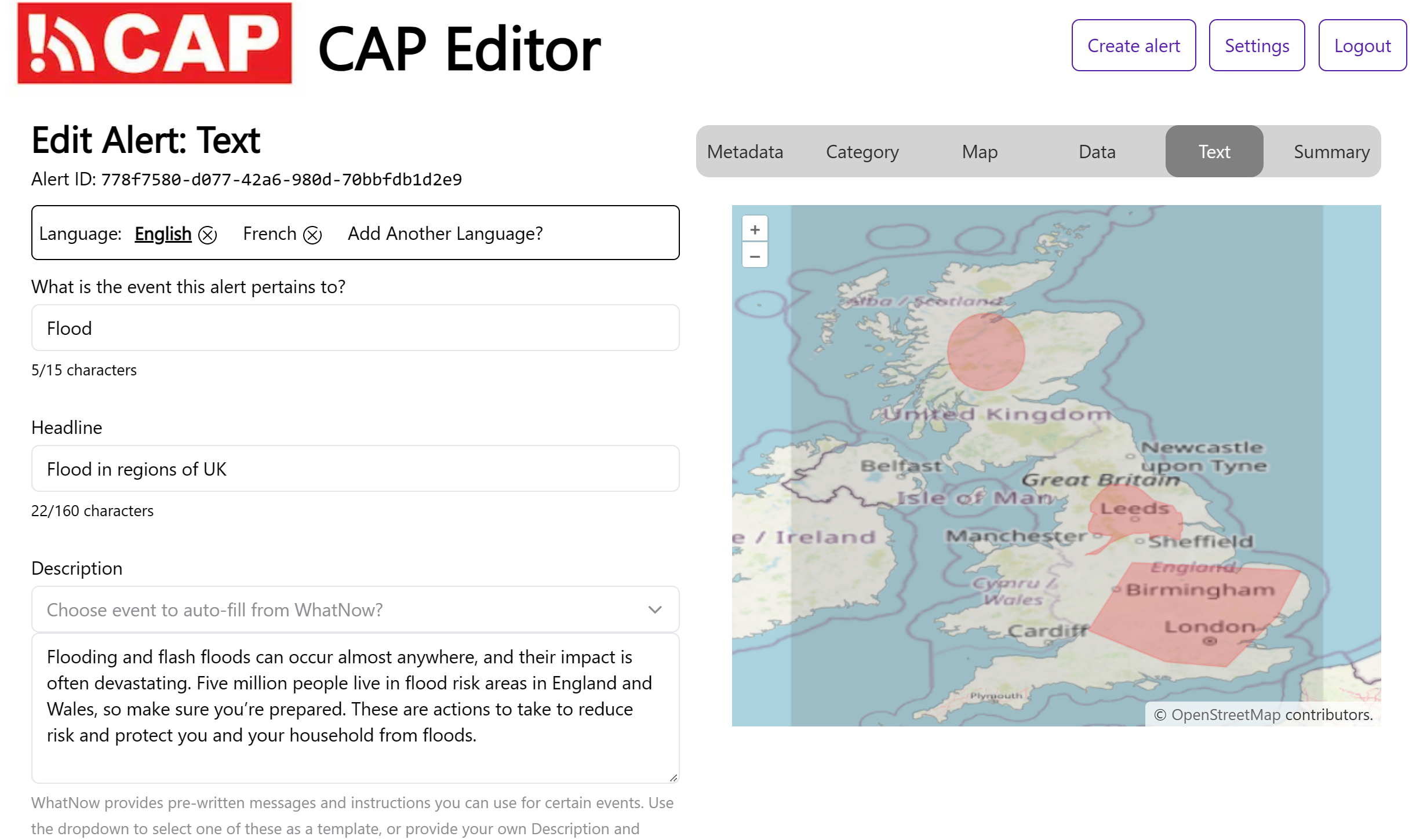The CAP Editor is a web-based platform for creating, reviewing, managing, and publishing CAP v1.2-formatted emergency and hazard alerts.
It has been created in collaboration with the International Federation of Red Cross and Red Crescent Societies (IFRC) as part of the University College London (UCL) Industry Exchange Network (IXN) by Shubham Jain.
- Secure user authentication with 'magic links' and usernameless WebAuthn
- Internationalised interface (English and French currently) using LinguiJS.
- WMO Register of Alerting Authorities integration: users must be verified by their Alerting Authority to use the platform
- Create draft alerts
- Create multilingual alerts
- User roles: composer (view/create/edit draft alerts), approver (viewc/create/edit/publish draft alerts), administrator (create/publish any alert)
- User-friendly alert creation UI: individual steps, prefilled defaults, graphical map with circle/polygon drawing
- WhatNow integration for pre-filled multilingual alert instruction and descriptions
- Digital Signatures with XMLDSIG
- Decentralised and easily deployable with Docker Compose
Please see the documentation site for full documentation on the system architecture, implementation details, development instructions, testing, and deployment information.
IMPORTANT: If you are using the CAP Editor to publish CAP alert feeds, you should get in touch with the IFRC to onboard with the IFRC Alert Hub, so your alerts can be aggregated and disseminated.
Dashboard:
Editor:
This platform is for use by Alerting Authorities. It can be installed by individual regions/Alerting Authorities for a fully functional CAP Editor that works out-of-the-box, with built-in access rights management and security.
This is a Next.js project.
In the below architecture diagram, the feed server is this Next.js app.



